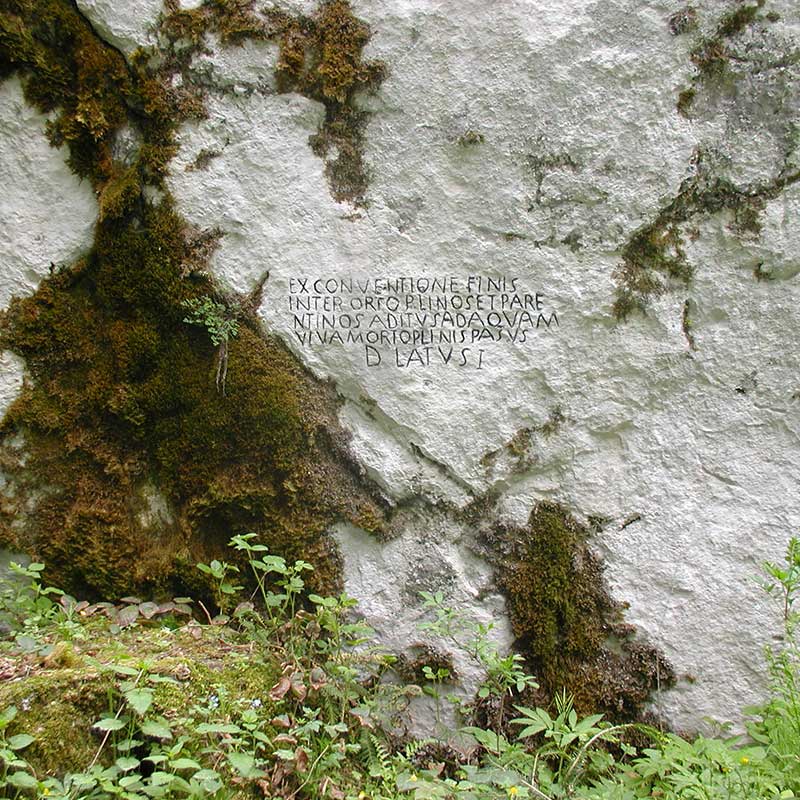Above Kosinjski Bakovac, in the Begovača forest near the Begovača spring, lies Pisani kamen (“Inscribed Stone”), an epigraphic monument dating from the 1st to 4th century AD. Carved in Latin on a rock face, the inscription records the granting of access to the “living water” of the Begovača spring to the Japodian Ortoplini tribe by the Parentini tribe of the Kosinj area. The Ortoplini inhabited the area of present-day Stinica near Jablanac; their pastures lacked water.
The inscription on the Pisani kamen reads:
“EX CONVENTIONE FINIS INTER ORTHOPLINOS ET PARENTINOS ADITUS AD AQUAM VIVAM ORTHOPLINIS PASSUS D LATUS I.”
(Translation: “By agreement between the Ortoplini and the Parentini, access to the living water is granted to the Ortoplini by a path five hundred steps long and one step wide.”)
Pisani kamen represents the oldest known legal act regulating water use in this region.
This “agreement” is connected with the inscription of the Roman governor Publius Cornelius Dolabella, found in a dry stone wall between Jablanac and Stinica, which regulated the territorial boundary between the Bega and Ortoplini communities. The inscription was located at the beginning of the wall, on a large, irregularly shaped stone. Dolabela’s Stone was later placed in the archaeological collection of the City Museum of Senj.
The boundary dispute between the Bega and Ortoplini was resolved by a ruling of the Roman authorities and the construction of a dry stone boundary wall. Locals call this wall the “Greek Wall,” believed in local legend to have once led all the way to Pisani kamen.
In both instances, the Roman authorities acted as arbiters among the local communities in their disputes and agreements. Most conflicts arose from the use of essential resources—especially drinking water, pasture, arable land, and transport routes.


